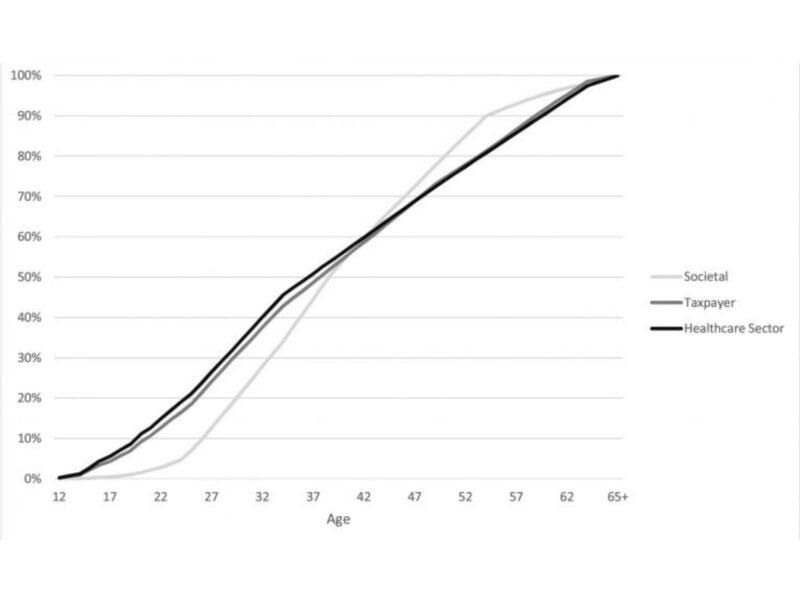The Cost of Opioid Use Disorder and the Value of Aversion

According to a new study, the total annual cost of opioid use disorder (OUD) to U.S. society in 2018 was $786.8 billion. This figure includes costs associated with excess healthcare expenditures, criminal justice resources, lost workplace and home productivity, and premature mortality. Of the $786.8 billion, $89.1 billion was attributed to additional healthcare expenditures. The study was conducted by Sean M. Murphy, PhD, associate professor of population health sciences at Weill Cornell Medicine and director of consultation services at the Center for Health Economics of Treatment Interventions for Substance Use Disorder, HCV, and HIV (CHERISH). He estimated the annual taxpayer burden of OUD, which consists of the additional healthcare costs incurred by public insurers and on behalf of those who are uninsured, as well as costs to the criminal justice system, to be $93 billion. Dr. Murphy further calculated that approximately three-quarters of the annual costs associated with OUD can be attributed to people in their mid-twenties to late forties.
Quantifying the cost associated with OUD is an important step to addressing the opioid crisis, as these figures can increase public interest and, in turn, the dedication of scarce resources. However, robust economic evaluations of interventions for the treatment and prevention of OUD that include measures of both cost and effectiveness are necessary to inform optimal resource allocation. To support these economic studies, Dr. Murphy also estimated the value of preventing an OUD, overall and by age. The mean value of preventing an OUD across all ages in the U.S. was estimated to be $2.2 million for society, $325,125 for taxpayers, and $244,030 for the healthcare sector.
Dr. Murphy’s estimates are substantially higher than previous ones due to his innovative approach and ability to include costs associated with the recent increase in overdose deaths due to synthetic opioids such as fentanyl. In comparison to Dr. Murphy’s estimate of $786.8 billion, a 2016 study estimated the societal economic burden to be just $84.6 billion (2018 USD), while a 2017 study estimated $535.3 billion (2018 USD) in societal burden.
Dr. Murphy’s analysis used 2018 data from the National Survey on Drug Use and Health, and the CDC WONDER Database on all U.S. persons at least 12 years old, with an OUD, or who died of opioid-related overdose. The age- and stakeholder-specific values, which had not previously been calculated, will allow for more robust and targeted economic evaluations of interventions to reduce the burden of opioids.
Dr. Murphy concludes, “The opioid crisis continues to take an enormous toll on the personal, public, and economic health of the United States. This study estimates the economic burden incurred by the U.S. healthcare sector, U.S. taxpayers, and U.S. society, as a result of opioid use disorder and opioid overdose deaths. The findings highlight the continued need for resources to address the opioid crisis and provide critical inputs for the economic research needed to determine how best to use those resources.”